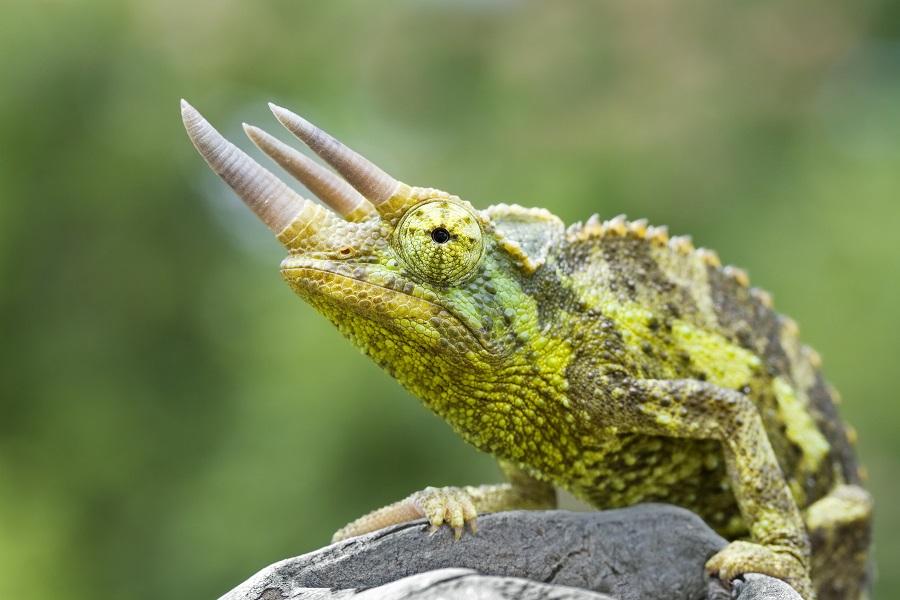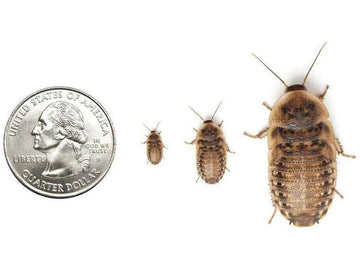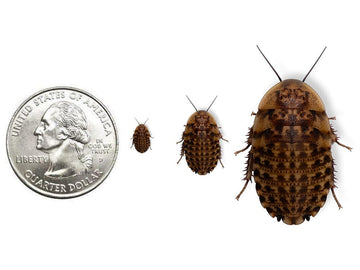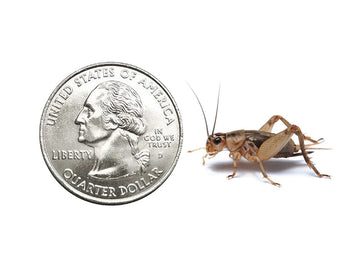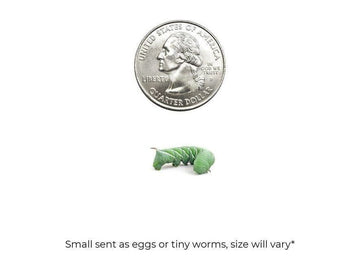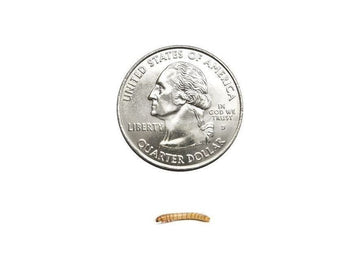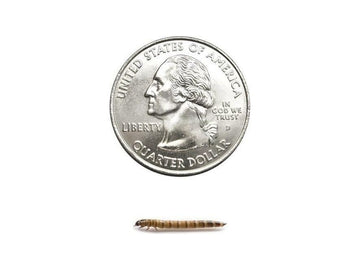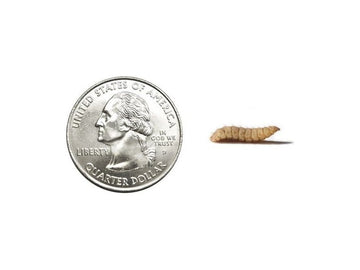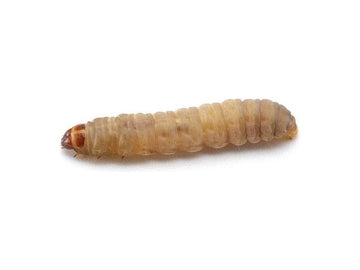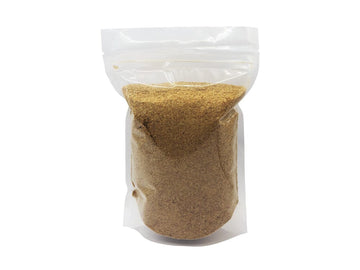Jackson’s chameleons (Trioceros jacksonii) are 7-14” long, diurnal, arboreal lizards native to the mountains of Kenya and Tanzania. They prefer a montane forest habitat with cool air, foggy nights, and lots of trees.
Jackson’s chameleons are generally bright green with a darker green pattern, but exact color and pattern depend on the individual, based on factors like subspecies, sex, mood, and even local temperature. Contrary to popular myth, chameleons don’t change color for camouflage — they actually do it to communicate!
Jackson’s chameleons are not easy animals to keep as pets, despite their ready availability in the pet trade. They are very sensitive to poor care, and get sick easily. However, when properly housed, then can be rewarding pets that live up to 9 years.
Subspecies
There are three subspecies of Jackson's chameleon. Those include:
- Trioceros jacksonii xantholophus, or “Xanths”. These are the largest subspecies. Males have three horns and females have none, although there have been very, very rare occasions of females with extremely small "horns".
- Trioceros jacksonii merumontanus, or Mt. Meru Jackson's. These are smaller subspecies. Males have three long horns and females have one horn.
- Trioceros jacksonii jacksonii, which is basically all others that are not the above two. These will likely be broken up further into more subspecies in the future. Males and females can have horns, females can have anywhere from 0-3 horns, which can cause confusion for new keepers as to what sex they have!
Recommended terrarium size for Jackson’s chameleons
The recommended minimum enclosure size for a single Jackson’s chameleon is 24”L x 24”W x 48”H. If you can manage it, a larger enclosure is always better! Jackson's chameleons are likely to appreciate any extra width and/or height. Fully mesh enclosures are great for maximum ventilation, which is important for chameleons, but they are not required. If you live in a very dry climate a fully mesh enclosure can cause some issues. PVC enclosures are also a good option, especially if the front and top are ventilated. If air flow becomes an issue in any enclosure, a small computer fan or modifications can easily fix that problem.
Housing multiple Jackson’s chameleons in the same enclosure is not recommended.
Do Jackson’s chameleons need UVB?
Yes! Jackson’s chameleons require UVB lighting for their survival. UVB lighting helps provide a clear day/night cycle, provides all of the vitamin D that your pet needs, strengthens the immune system, facilitates better digestion, and other benefits.
Here are the best UVB bulbs for Jackson’s chameleons housed in a 24”L x 24”W x 48”H enclosure:
The brands we recommend here have "kits" available (in 24" length), that come with the proper fixture. If not, be sure your fixture has a reflector. Also be sure that the fixture your UVB bulb is housed in does not have a clear plastic bulb cover, as plastic and glass block UVB. Place the basking branch so the chameleon’s back will be 6” below the lamp.
Jackson’s chameleons also benefit from plant grow lights as part of their environment. You can add a bright ~6500K LED or T5 HO fluorescent grow lamp to provide extra illumination, as well as help any live plants in the enclosure to thrive.
Most people do a 12 hours on and 12 hour off lighting schedule. However, you can also do longer times on during the summer and shorter times on in the winter to mimic the actual sun. All lighting should be off at night, this species highly benefits from night temperature drops.
How to measure UVI
The strength of a lamp’s UVB output is measured in UV Index, or UVI. Coincidentally, this is the same measurement that the World Health Organization uses to measure risk of skin damage from exposure to solar radiation. Fortunately, you don’t have to worry about your chameleon getting skin cancer as long as you use UVB correctly. The best way to measure UVI in your pet’s enclosure is with a Solarmeter 6.5 or 6.5R.
To use the Solarmeter, hold the device vertically at basking height, with the lens pointing directly up at the lamp. Jackson's chameleons should have a basking UVI around 3.0 at the level of their spine during basking, with UVI everywhere else in the enclosure being lower. Although there is a basking distance recommended in the previous section, note that factors such as the density of your terrarium mesh as well as the exact hood you’re using for your UVB lamp will affect the exact distance needed.
Best temperature for Jackson’s chameleons
Jackson’s chameleons do best with a mild basking area temperature around 83-85°F, which can be measured with a temperature gun. The ambient temperature is ideal between 68-72°F, which can be measured by digital probe thermometers. This species is very sensitive to heat stress, so it is really important to monitor the lighting and ensure the heat does not go above 83-85°F.
For heat, we recommend a halogen heat bulb placed above the basking branch. We do not recommend ceramic heat emitters (CHEs), red bulbs, or blue bulbs, as these are not as effective and are more likely to cause burns.
For best results, elevate the lamp above the top of the enclosure with the Exo Terra Light Bracket. If temperatures are still too high, you can use a rheostat or dimmer to lower the intensity.
Best humidity levels for Jackson’s chameleons
Jackson’s chameleons really do best with lower humidity during the day and very high humidity at night. During the day, we recommend aiming for 30-50% humidity, and aim for 75-100% at night. Humidity can be measured via digital probe hygrometer, with the probe placed in the middle of the terrarium.
Humidity can be increased by misting the enclosure every morning and night with a large pressure sprayer or automatic misting system. We also recommend a cool mist humidifier to run at night, connected to a humidistat to maintain humidity levels above 75%. Having live plants in the enclosure will also naturally help your humidity!
Reptile humidifiers and foggers should only be used with distilled water and require frequent disinfecting to keep your reptile from getting sick.
Best substrate for Jackson’s chameleons
Jackson’s chameleons are strictly arboreal, so they don’t really need substrate to dig in or walk on. This species also does not lay eggs, so no need to supply a lay bin for your female. Unless you plan to do fully bioactive, we do not recommend using substrate.
You can keep the solid bottom and add a drain that goes into a large bucket. This will require some DIY, but is well worth the effort. There are many DIY guides available on YouTube and in chameleon groups/forums if you are interested.
How to decorate a Jackson’s chameleon terrarium
An empty enclosure makes for a bored and stressed Jackson’s chameleon, reducing its quality of life. Keep your pet relaxed and engaged with its environment with the strategic use of décor items that encourage it to exercise natural behaviors!
You will want plenty of vines, thin branches, and foliage to decorate your terrarium. Arrange them in such a way that the chameleon has somewhere to hide as needed, with an open area under the heat lamp for basking. Think of a "forest edge", you want lots of foliage and hiding with a nice spot for your chameleon to bask up high.
All climbing branches should be securely anchored to the walls of the enclosure.
What to feed to a Jackson’s chameleon
Jackson’s chameleons are insectivores. This means that they only eat insects. Here’s a recommended basic feeding schedule:
- Juveniles (3-6 months) — No limit, as much as they can eat 1x/day
- Subadults (6-12 months) — 8-12 bugs every other day depending on size/type
- Adults (over 1 year) — 3-8 bugs every other day depending on size/type
Feeder insect options: crickets, discoid roaches, dubia roaches, banana roaches, grasshoppers, red runner roaches, black soldier fly larvae & flies, hornworms & moths, silkworms & moths, superworms
We suggest offering a wide variety of insects, not just one or two different kinds!
Supplements
You will also want calcium and vitamin supplements to prevent your chameleon from developing a deficiency. This is our recommended schedule for supplementing a Jackson's chameleon:
Every feeding: (one) calcium without D3
1x/month: (one) multivitamin
It's always a good idea to make sure your feeder insects are well hydrated and gutloaded prior to feeding. We recommend Dubia Diet chow and Dubia Dew hydration crystals!
Providing drinking water for your Jackson's chameleon
Although Jackson's chameleons don’t drink from water bowls, misting may not be enough to keep your pet properly hydrated. Installing a dripper over a leaf for your chameleon to drink from at any time of day is a good way to fill in the gaps and help prevent dehydration. This can also be accomplished with ice cubes!
How to handle your Jackson’s chameleon
Reptiles generally don’t appreciate petting and handling in the same way that dogs and cats do. Some tolerate it more than others, but generally veiled chameleons prefer to be left alone. That being said, some of them learn to tolerate low levels of handling and will walk onto their keeper’s hand when offered.
Treats and hand-feeding are very effective for teaching your chameleon that you are not something to be feared, since food can motivate your pet to move outside of its comfort zone. You can use soft-tipped feeding tongs, but holding the bugs just with your fingers is just fine also.
When should you take a Jackson's chameleon to the vet?
Dogs and cats aren’t the only pets who need veterinary care — reptiles get sick and need professional help the same as any other pet. If you notice that your veiled chameleon has any of the following symptoms, make an appointment with an experienced reptile vet right away:
- Mucus discharge from the mouth/nose/eyes
- Swelling around mouth (temporal gland infection)
- Persistent lethargy
- Unexplained weight loss
- Persistent lack of appetite
- Straining/inability to defecate or prolapse
- Open wounds
- Swelling or bumps anywhere on the body
- Sudden, unusually aggressive behavior
You can find a reputable reptile vet near you with the ARAV Find a Vet tool.
*This care sheet contains only very basic information. Although it’s a good introduction, please further your research with high-quality sources. The more you know, the better you will be able to care for your pet!

